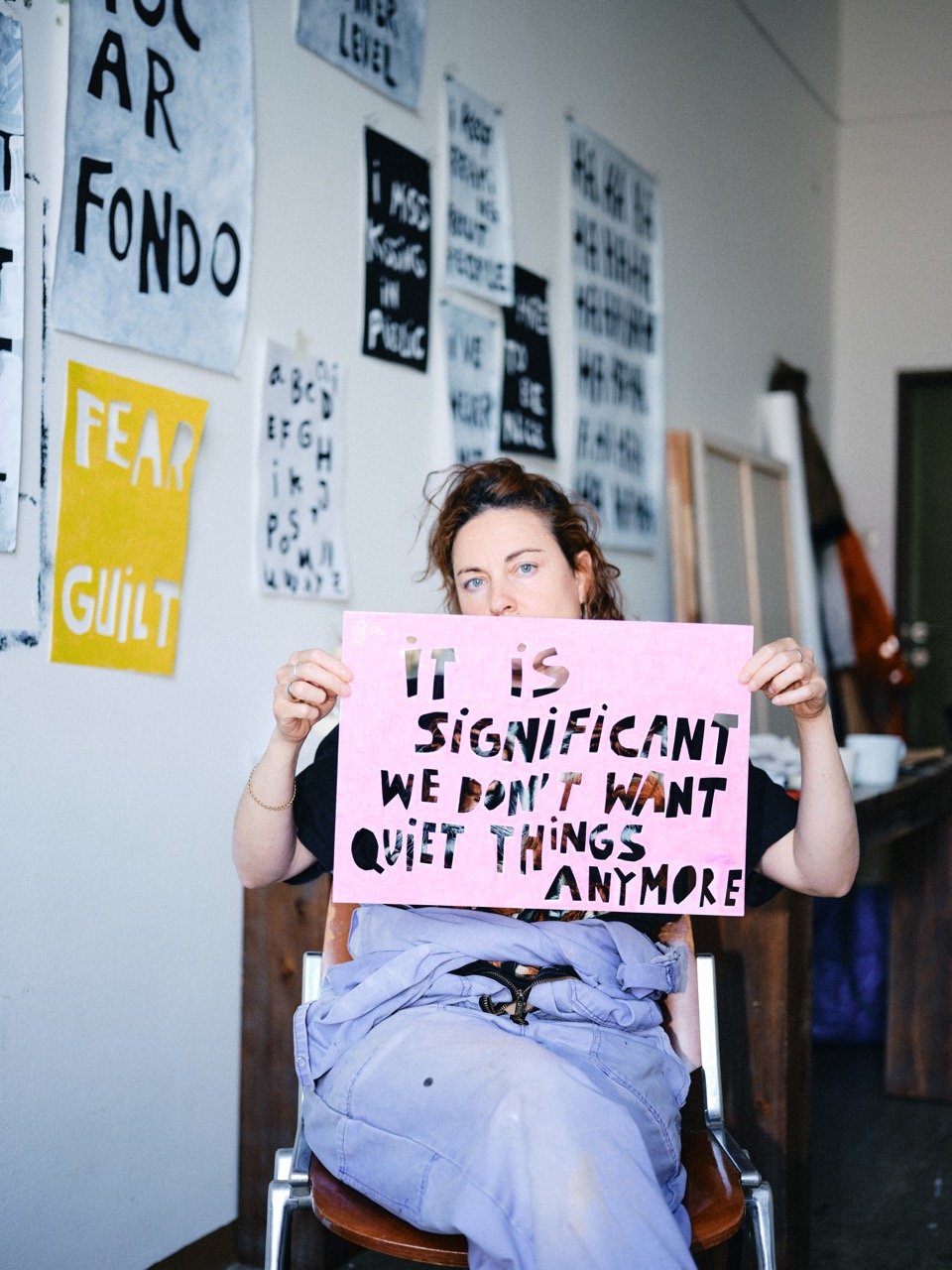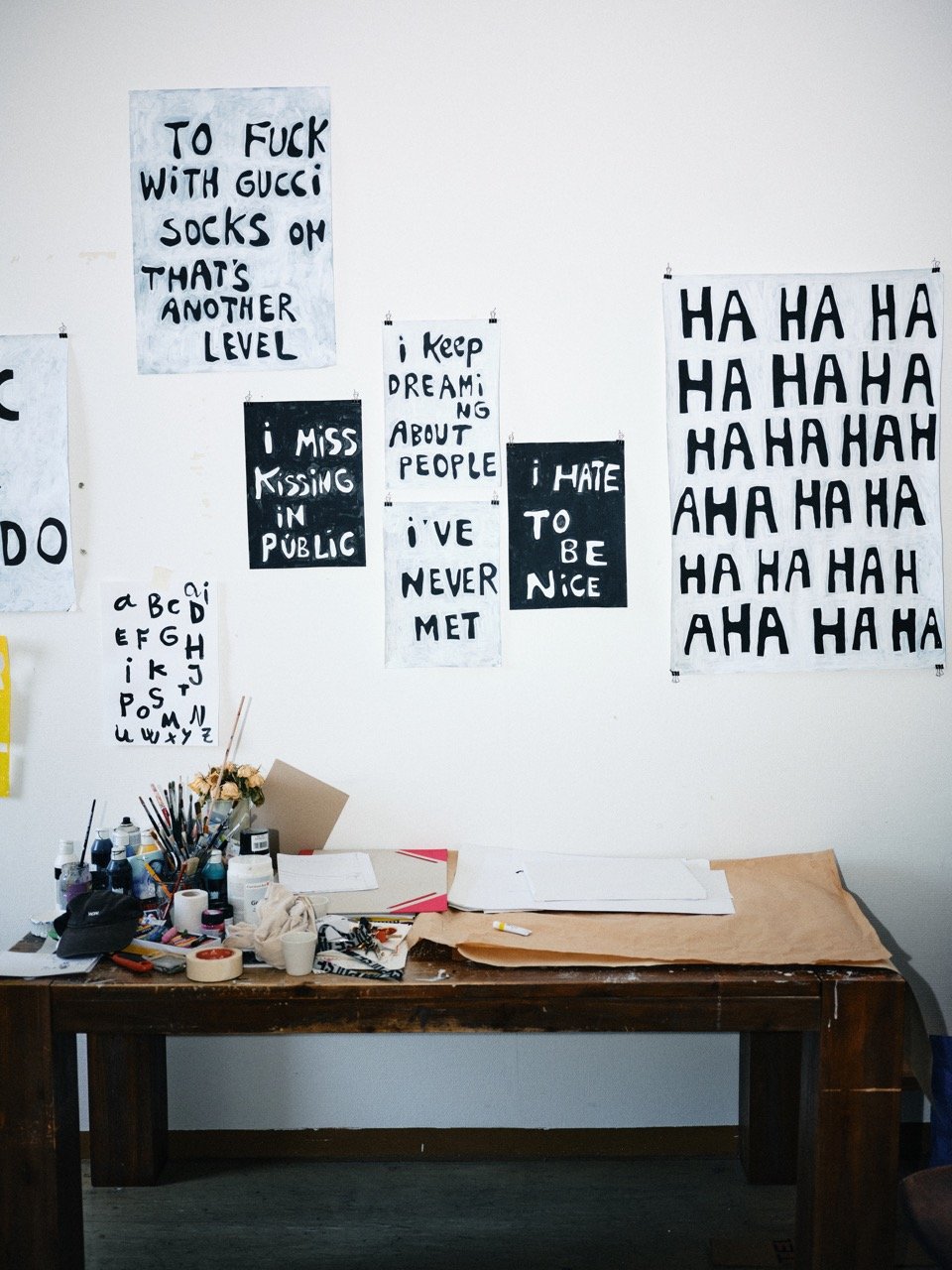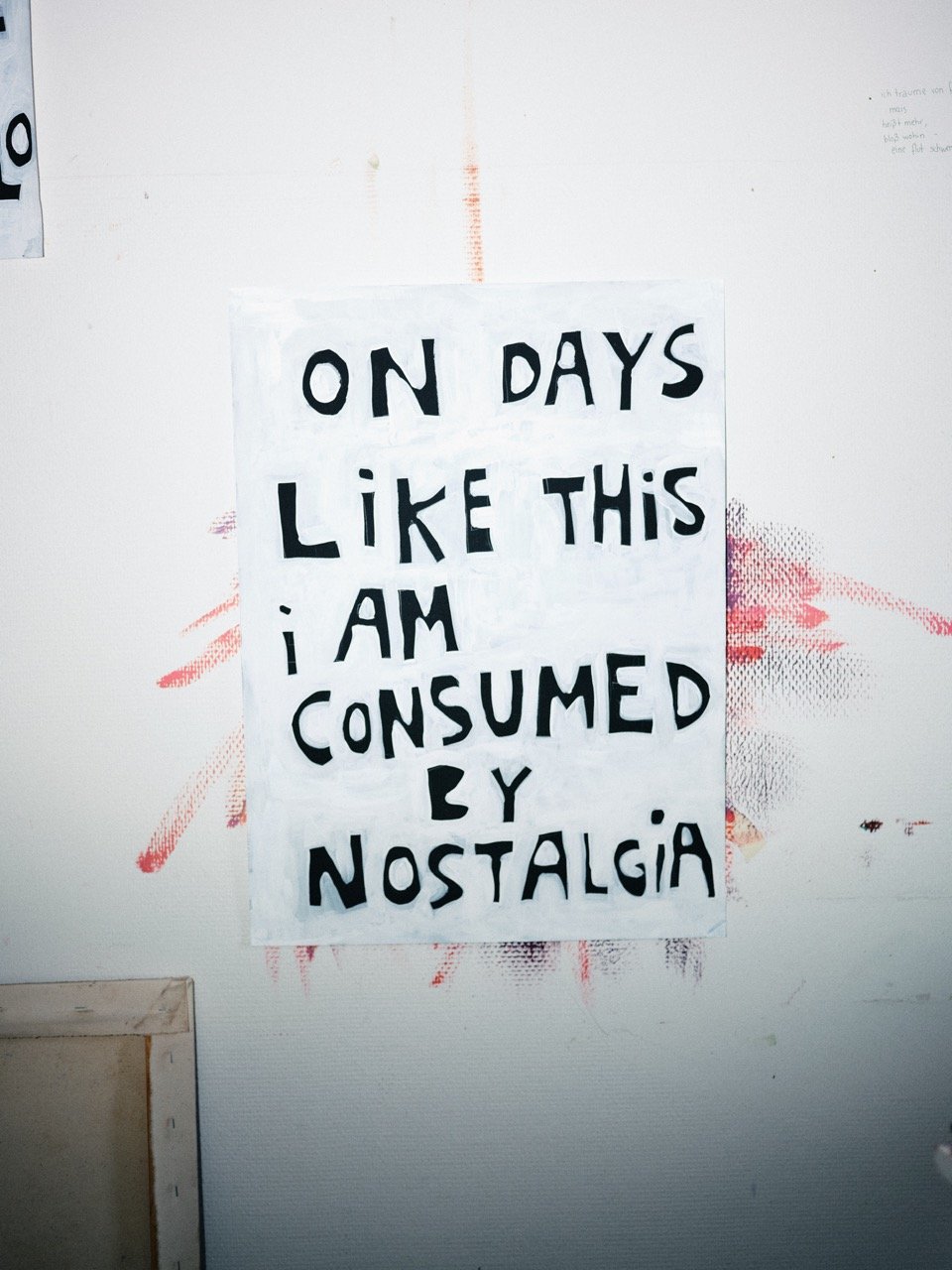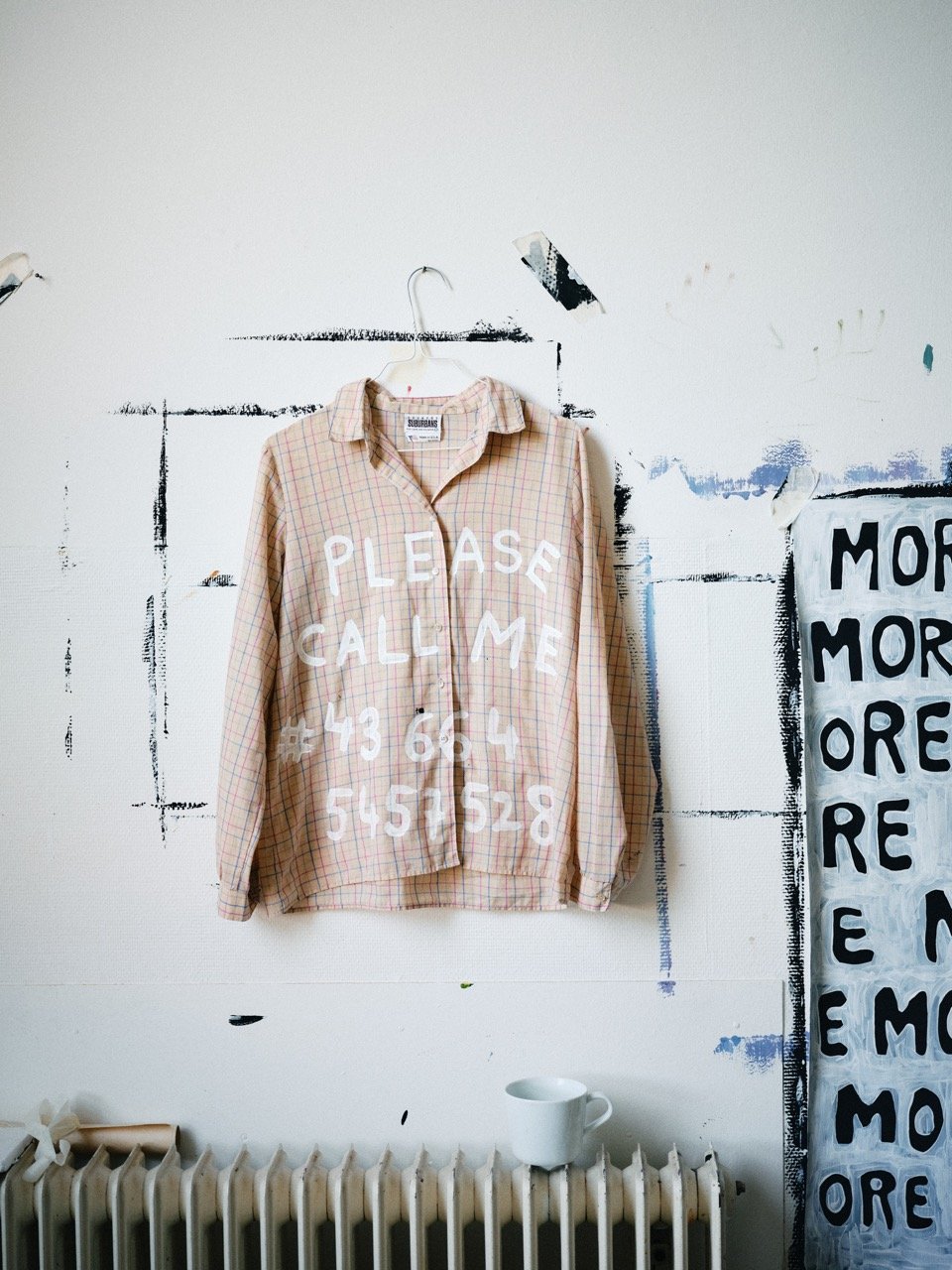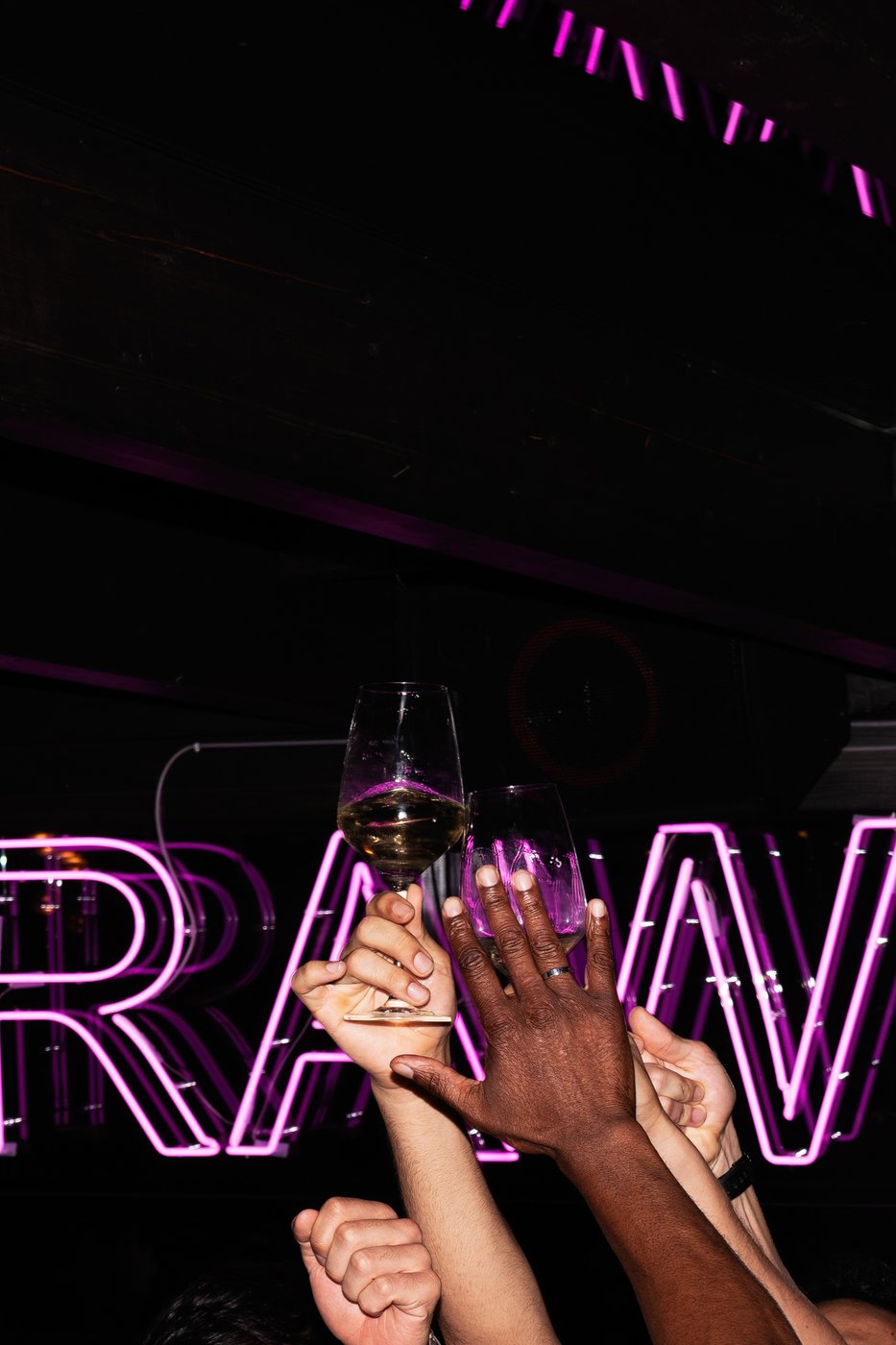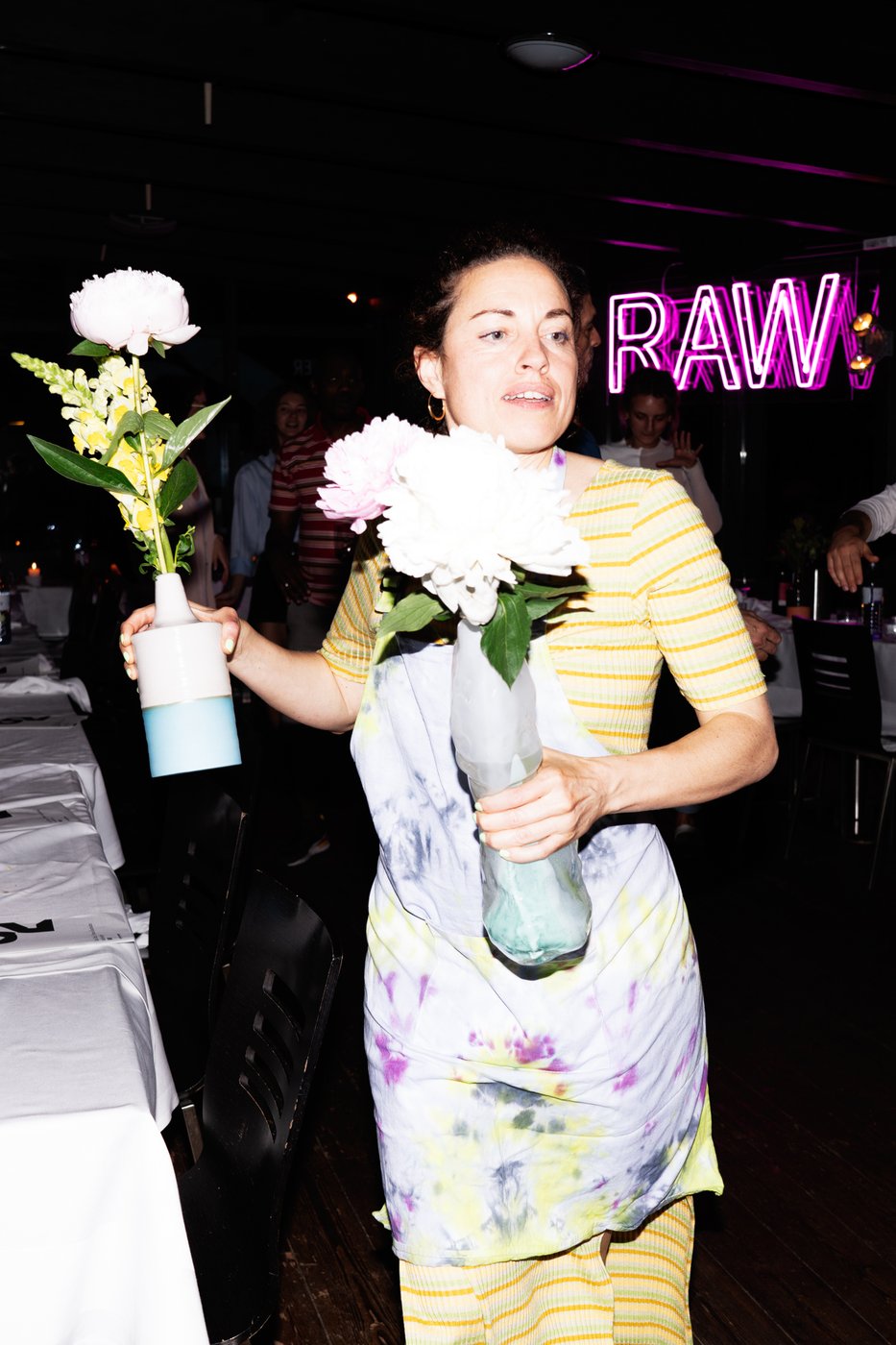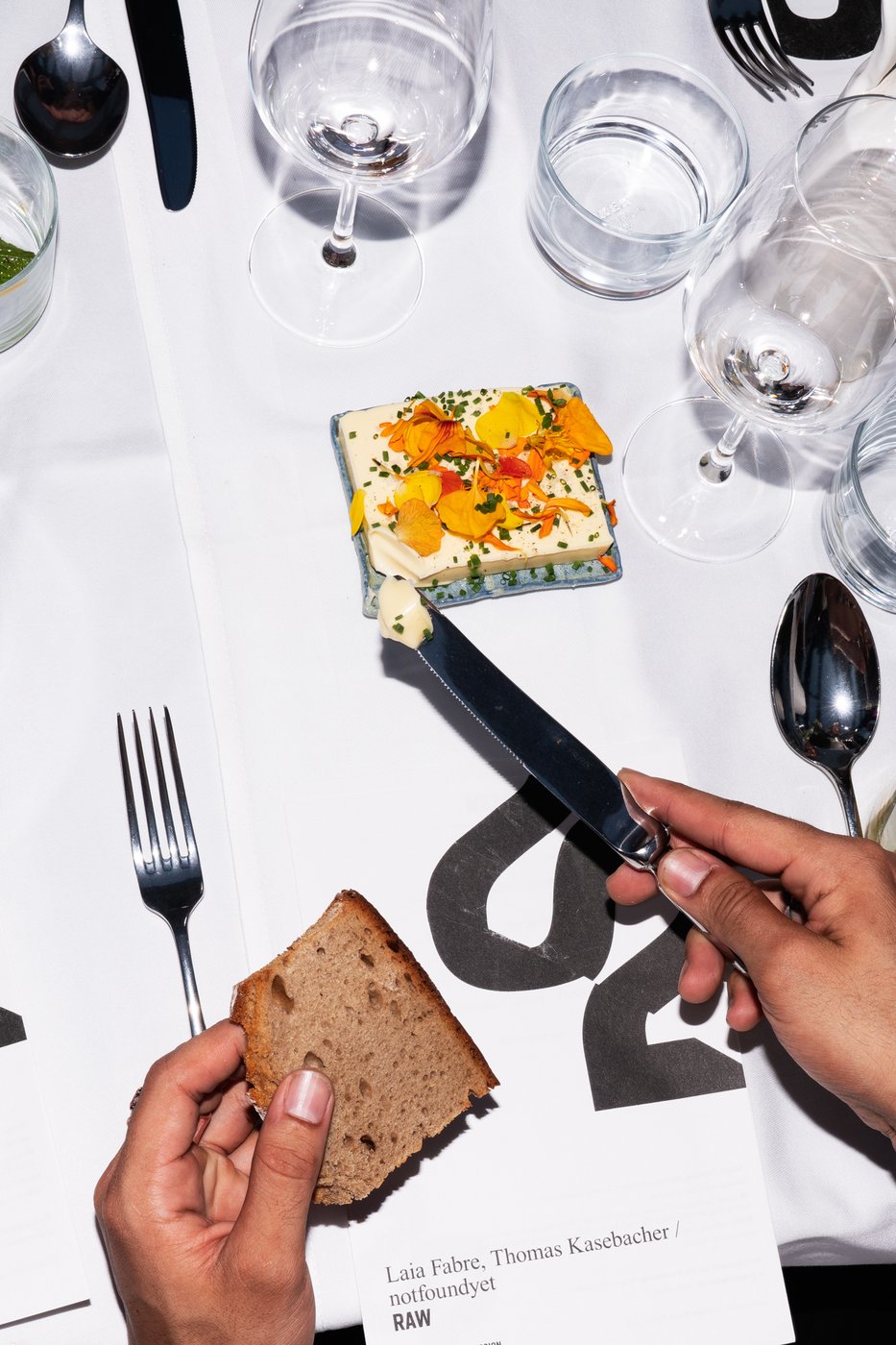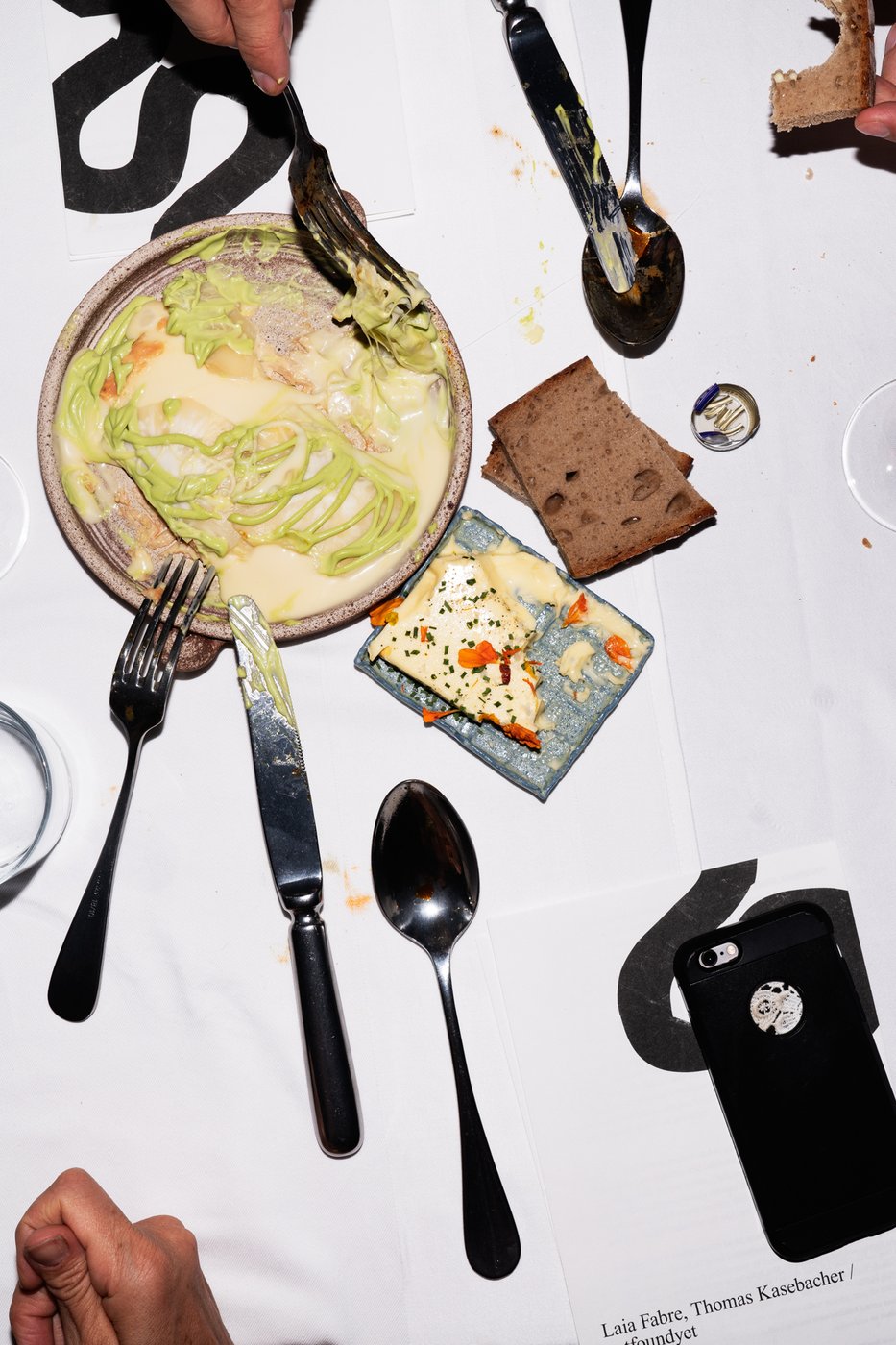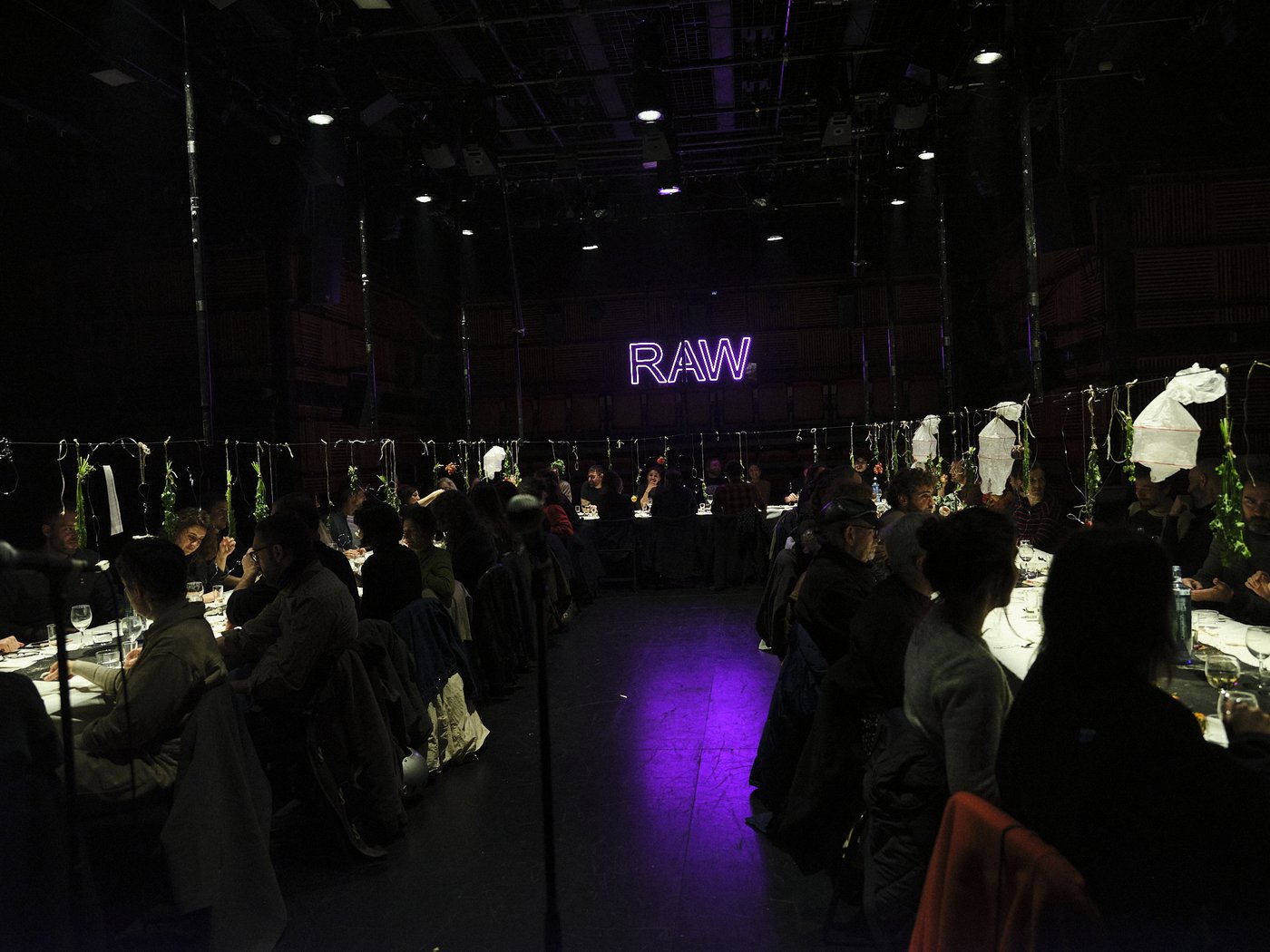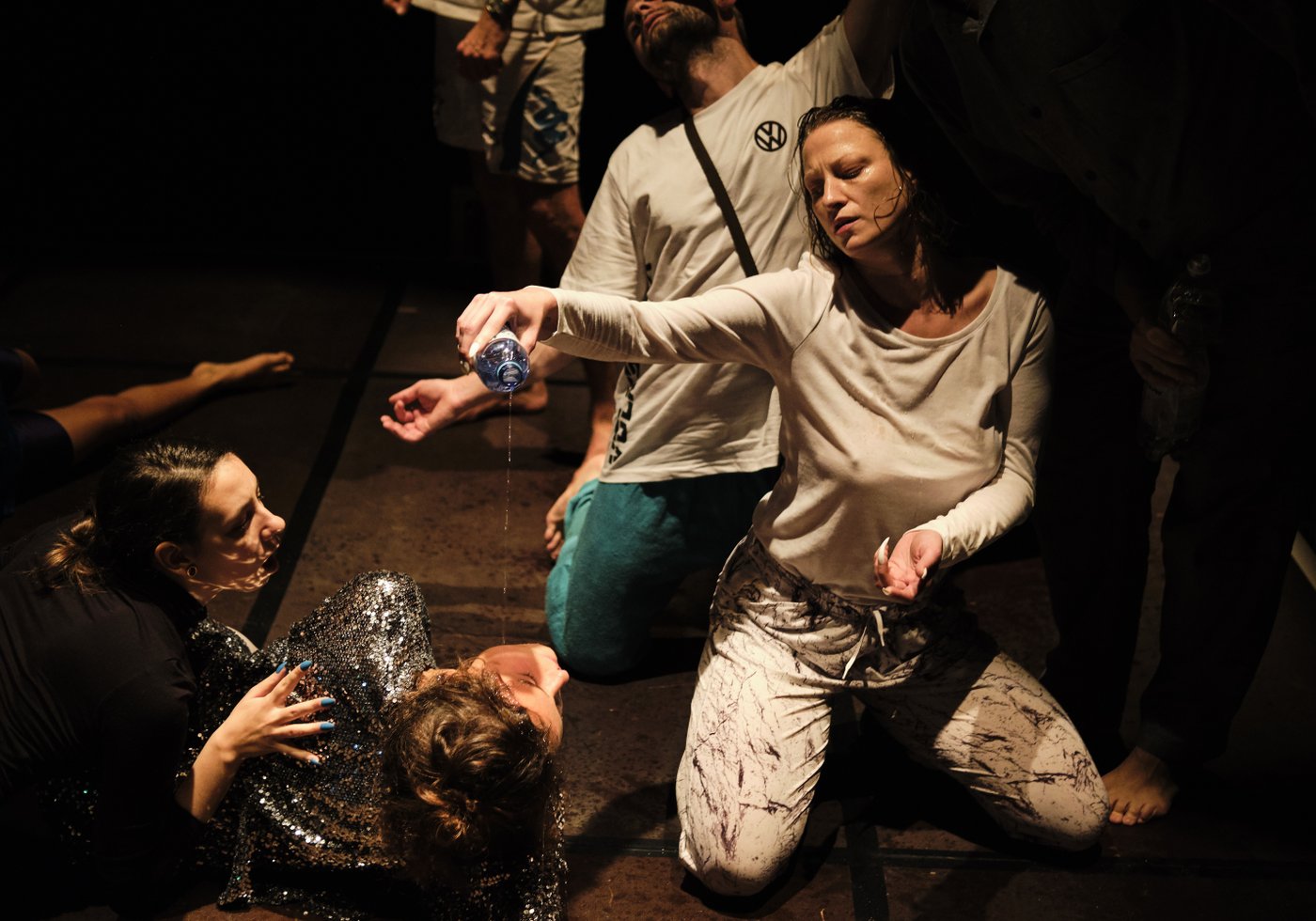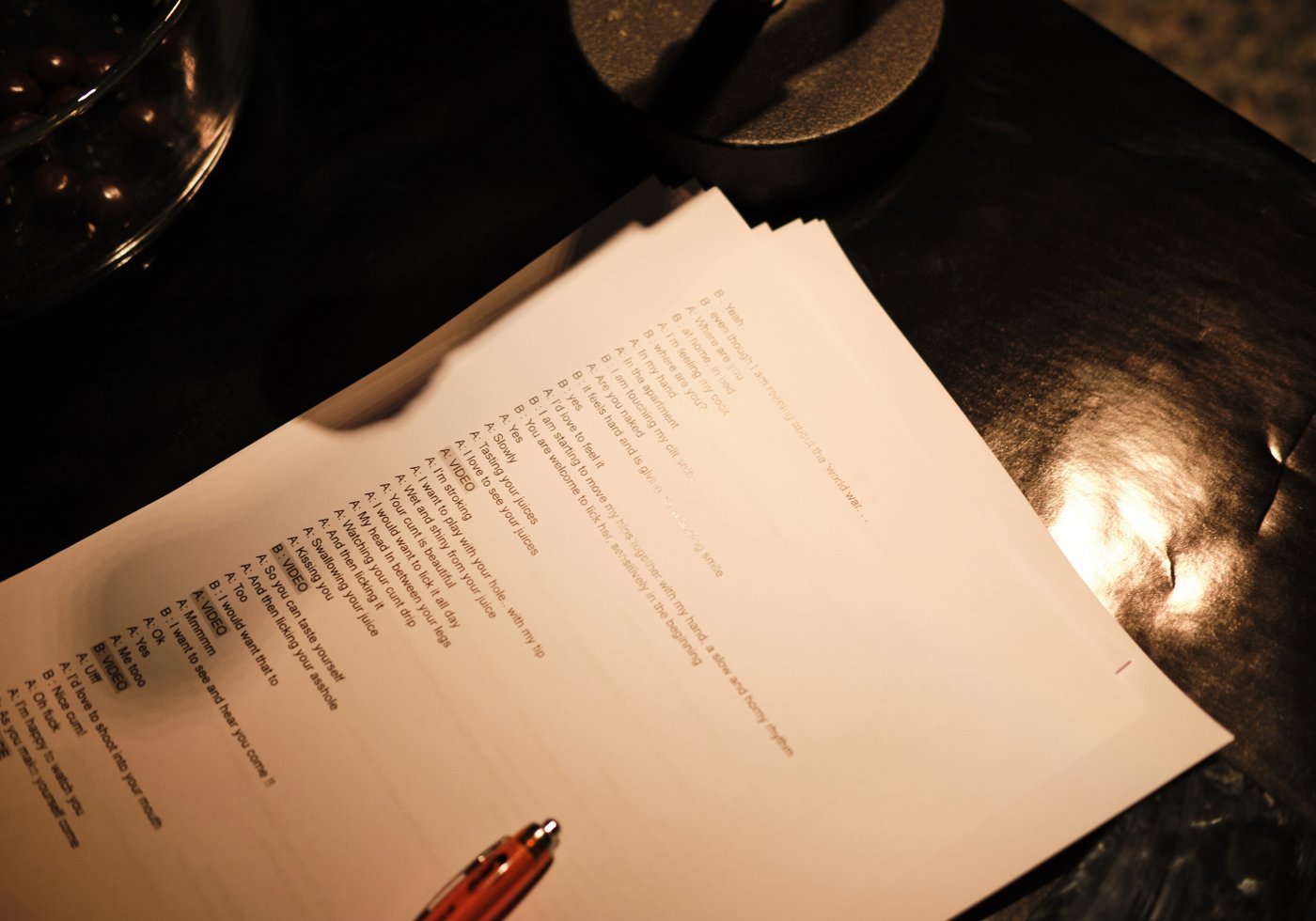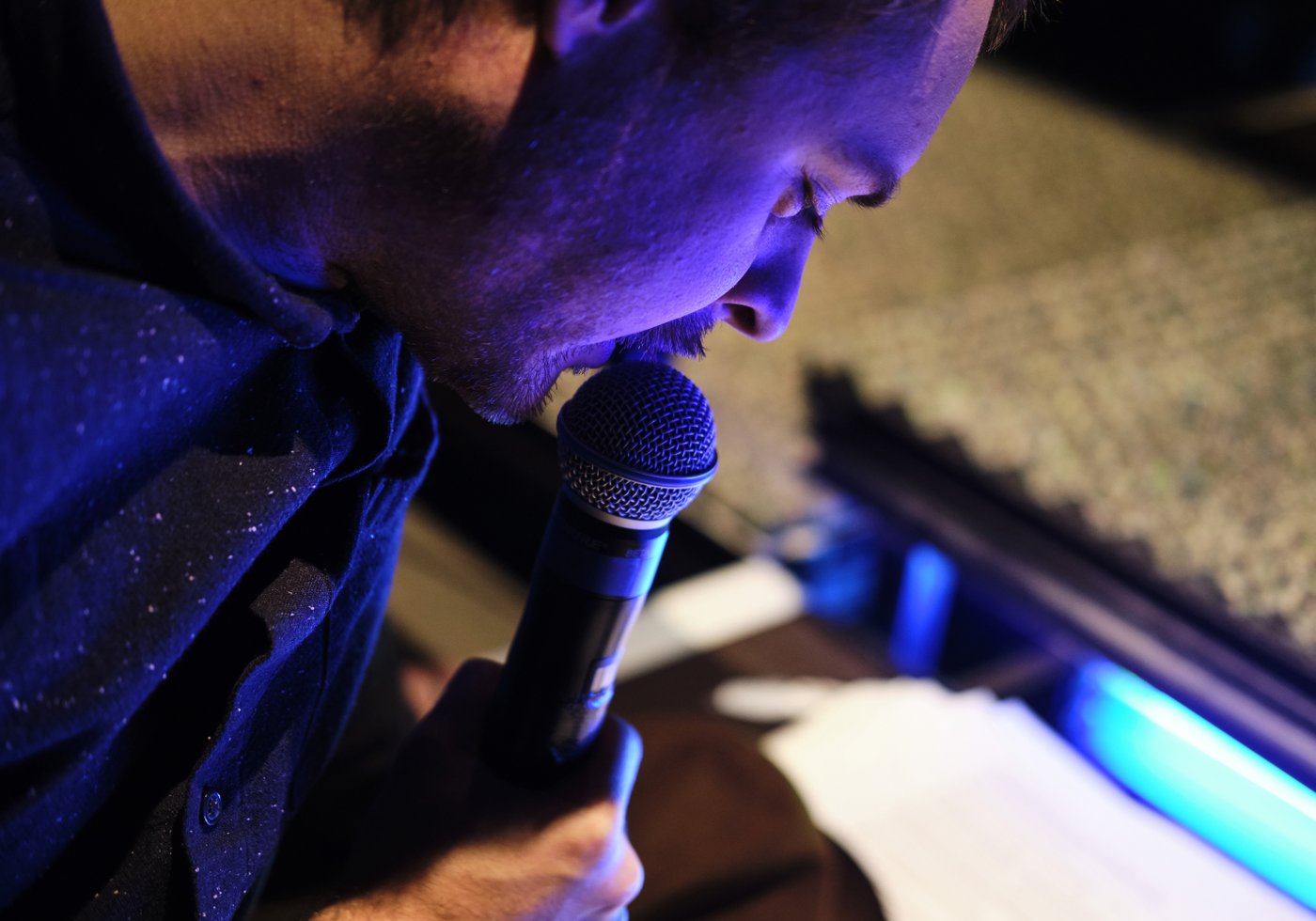Laia Fabre
In conversation with Barbara Pflanzner, Academy Studio Program, Creative Cluster, May 21, 2024.
In your studio in the Creative Cluster, your latest works on paper are hanging on the wall and are quite different from your previous body of work. Can you explain what they’re about?
It all began with writing down numerous notes on my phone. Much like a musician writes lyrics, I was capturing my thoughts. Initially, I posted them as reels and stories on Instagram. The overwhelming reactions I received inspired me to transform these notes into paintings. When I saw the call for the Studio Program, I saw it as the perfect opportunity: I needed a space away from home where I could transfer all these texts from my notes onto paper, carefully selecting them, since I had so many. Typically, I start by applying a black primer, and then layer with white paint to create the letters. The brushstrokes and texture can vary greatly from day to day. It’s always a bit rough, a bit messy, not exactly perfect. But perfectionism isn’t really my thing, not at all. I actually quite enjoy their somewhat raw appearance; it really resonates with me. My performances, for instance, tend to be intense and somewhat trashy. That really captures a lot about my style. The shifting fonts also add to this vibe – it’s not intentional, it just happens naturally.
Until now, you have been better known for your performance and video work. What prompted this shift to a different medium?
Yes, that’s correct. I studied video and video installation, but I was also active as a performer. As a teenager, I painted a lot. During high school, I attended a wonderful art school in Barcelona for four years, where I took lessons with a painter twice a week and gained a lot of experience. However, there came a point when I took a break from painting. Nonetheless, I always enjoyed it. When I had these texts at hand, I wondered what I wanted to do with them, and painting seemed like the natural choice. Initially, it was more of a personal endeavor without a specific goal, but the positive feedback I received encouraged me to pursue it further.
Since 2009, you’ve been part of the collaborative project notfoundyet. Can you explain where your focus lies in their performances?
In notfoundyet, my former artist partner Thomas Kasebacher and I consistently blur the lines between fiction and reality in our performances. We focus on exploring the dynamics of society and community, as well as examining the complexities of human existence. In 2021, the Wiener Festwochen invited us to create a lab and we called it CALDO (which is a broth in Spanish); we spent 24 hours with others cooking soup stock that required slow cooking and time to be prepare. We were intrigued by the dynamics of spending such an extended period of time with strangers. What unfolds during this time? You end up forming a unique community and collaboratively creating something meaningful.
The same concept unfolded in 2022, when we presented our project RAW at the same festival, merging culinary and artistic experiences. This concept was showcased in Barcelona the following year. For RAW, we organized four evenings in which we paired local chefs with international artists, showcasing their work at the Wiener Festwochen. Throughout these evenings, we engaged with the audience for several hours, offering a blend of culinary delights and artistic exploration. The preparation for this project was quite extraordinary, considering all participants lived on different continents. Since the artists and chefs had never met before, we had to coordinate via Zoom to devise menus that complemented each unique pairing. The menus were crafted based on the artists’ creative visions or the thematic essence of their artistic practice, resulting in meticulously curated evenings. The chefs, each operating their own restaurant, were skilled professionals. We were even fortunate enough to collaborate with Max Stiegl or the participant guest Isabelle Huppert. Thomas and I hosted, moderated, and also personally served at the events, emphasizing the importance of connecting with the guests. The essence lies in exploring what occurs within your body when you consume these remarkable foods and beverages. These dinners typically lasted at least four hours, allowing for organic connections to form and something special to emerge. Alcohol naturally played a role in enhancing the atmosphere, of course. As a guest, you became an integral part of the performance. We’ve thoroughly documented these evenings with fantastic photos and film footage, and it would be delightful to compile them into a publication.
Another significant project you developed with notfoundyet is HOT SPRINGS in 2020. Here, too, the audience was involved as an integral part. Could you elaborate on what this project entailed?
HOT SPRINGS is a work about sexuality and intimacy. Around 2020, we presented the show with the aim of arousing the audience to the point where they felt the desire to just go home and engage in sexual activity. This objective posed a significant challenge, particularly within the context of a live performance, where such themes can be perceived as embarrassing, and where it’s often difficult for individuals to fully immerse themselves. A friend of ours experienced this in the theater, and Thomas and I wanted to recreate it in our show. We experimented with various methods to engage the audience, such as interacting with them directly or passing around molecular food spheres that melted in the mouth. However, it’s important for us to clarify that our performances are not intended solely for the purpose of pleasing the audience; we aim to challenge them. They can’t simply sit back; we expect active engagement rather than passive consumption.
Thomas and I crafted numerous sexting dialogues between two individuals. As the audience entered the venue, the ambience was inviting – the room exuded warmth, infused with the scent of cigarettes and perfume, accompanied by music. Each person received a numbered envelope containing a dialogue, and those with matching numbers were paired together. Their task was to read these sometimes-explicit texts aloud using a microphone, which would be awkward at times. While some found it challenging, others found it amusing. However, it’s important to note that we never coerce anyone into participating in our performances. We’re not interested in inciting confrontation; rather, when Thomas and I have extended an invitation to the audience to engage, their response has always been generous. The video installation derived from this performance was acquired by MA7 and will be showcased at the Wien Museum musa in an exhibition in autumn.
What else is coming up in the next few months?
I’m excited to continue the painting exchange with my daughter and create works on canvas. She has an incredible talent for selecting colors and arrangement – it’s truly remarkable. I’m not sure yet how our collaboration will look. Perhaps she’ll start a painting and I’ll finish or add to it, or vice versa. It could be similar to how Andy Warhol and Basquiat collaborated.
Regarding upcoming events, I already mentioned the show at the Wien Museum musa in September, where The Fountain will be presented and which I’m looking forward to. Additionally, a friend of mine is planning to exhibit my new work in autumn and has asked me to choose the other artists for the show. Furthermore, I’ve got an exciting collaboration lined up with a painter friend Katharina Spielmann. She’s represented by Galerie Charim and they offered a six-week residency collaboration in October at the Anker Brotfabrik, where the gallery has a space and where we’ll be working on a project together.
It seems that you still enjoy working collaboratively.
I find that collaboration is really my forte, I’m a good team player. I’m also currently involved in an artistic collective called Answers and Questions. They have selected seven artists living in Vienna and seven who have recently moved to the city. These artists will be paired up to create collaborative works, which will later be exhibited at Galerie Barvinskyi in the 1st district. My partner in this endeavor is a textile artist based in Bratislava, and we have already started brainstorming ideas. At the moment, we’re leaning towards the idea of designing furniture. And last but not least, a performance is planned with notfoundyet, which has already secured funding. Due to the many ongoing projects, it’s scheduled for 2025. This performance will explore the theme of death from the perspective of young people, who often have more distance from this topic than adults. We developed this idea during the COVID-19 pandemic, curious about their experiences with death and how they perceive it in their lives. Our plan is to include up to seven young people from diverse backgrounds, as this inclusivity is important to us.
I’m truly happy to have so many ongoing and upcoming projects. I believe it’s important to take action rather than to overthink things. One particularly rewarding opportunity was to receive this scholarship, and I couldn’t be happier about it.
